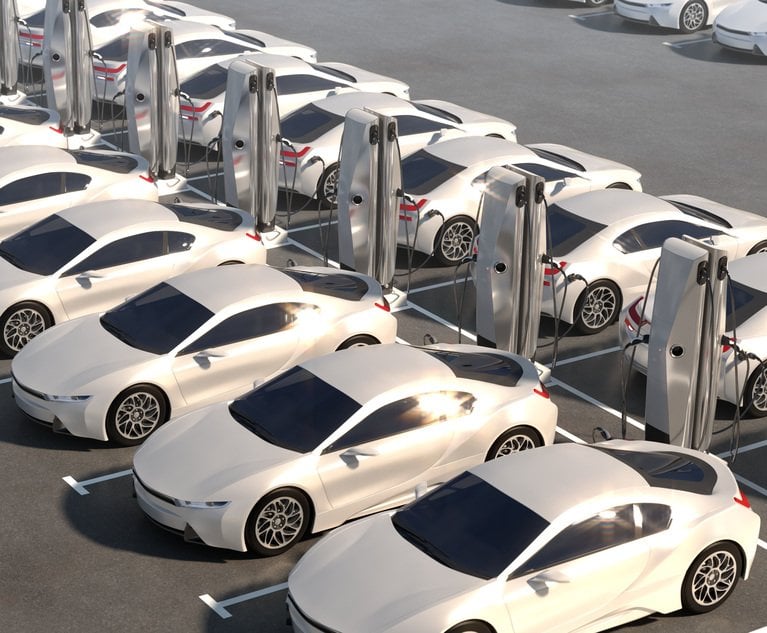As electric vehicles begin to take hold in the United States, automotive stakeholders are finding that they are often building the plane while flying it. Automakers are experiencing tremendous challenges in ramping up their EV production capacities due to talent shortages and supply chain challenges. Charging infrastructure is being deployed just a few steps ahead of demand. And insurers are finding that with each claim comes new lessons for how to cover these exciting new EV risks.
Yet this new era of driving does not have to be approached blindly. With some 4.5 million EVs sold in China just in the first seven months of 2023 — nearly six times more EVs sold in the U.S. — auto insurers in the U.S. have a unique opportunity to learn from our counterparts in China. Some of the lessons learned include how the risk profiles of EVs differ from those of internal combustion engine (ICE) vehicles and how new approaches are required toward underwriting EVs and handling claims involving electric vehicles.
Distinctive risk profiles
Along with the tremendous growth of EV car parc in China since 2018, differences in risk profiles identified between EVs and ICE vehicles have presented new challenges to Chinese auto insurers.
According to LexisNexis Risk Solutions’ internal analysis of claims data in the Chinese market, claims frequency of EVs is on average 56% higher and claims severity on average 52% higher, than those of ICE vehicles across all vehicle price ranges.
Claims frequency of new EVs is much higher than that of new ICE vehicles and it takes about three years for this gap in claims frequency between EVs and ICE vehicles to gradually narrow out. Since most new EVs are bought by people who have never driven an EV before, we think that it likely takes people three years to learn to drive their first EVs as safely as they would drive ICE vehicles. It’s hard to enumerate all the differences in risk profiles between EVs and ICE vehicles, however, it’s worth noting that the one-pedal driving mode offered on some EVs is associated with higher risk than the traditional fuel and brake dual-pedal driving mode.
NEV-specific insurance product
Insurance regulators in China recognized that the risk profiles of new energy vehicles (NEV) are distinctively different from traditional ICE vehicles, and innovatively defined a new NEV auto insurance product to account for these differences. NEVs here by definition include battery EVs, plug-in hybrid EVs and fuel cell EVs, but exclude non-plug-in hybrid vehicles which are primarily driven by internal combustion engines.
The new insurance product extends coverage beyond driving and parked scenarios to include a new EV charging scenario, and provides optional add-on coverage for property damage caused by power grid failure or by charging station malfunctions, liability damage caused by charging station malfunctions or by EVs being charged. The new product also extends coverage to spontaneous fires, which are more common for EVs due to the elevated fire risks associated with EV batteries. This coverage is typically excluded from traditional ICE insurance policies in China.
This new insurance product meant that insurers in China could meet the different needs of the growing EV segment, while remaining profitable and delivering excellent customer experience.
Taking these learnings on board in the U.S.
We’ve conducted similar research on the claims data of the EVs in the U.S. It’s not surprising that the results approximate what we have learned from China, as the fundamental factors driving these differences in EVs’ risk profiles are the same in both markets: Higher claims frequency as people adapt to the EVs that drive very differently, higher repair cost due to relatively lower repairability of the EVs and the scarcity of trained repair professionals.
 Xiaohui Lu of LexisNexis Risk Solutions. Credit: Courtesy photo
Xiaohui Lu of LexisNexis Risk Solutions. Credit: Courtesy photoWith EV sales in the U.S. projected to surpass one million by the end of 2023, auto insurers in the U.S. need to develop strategies to stay ahead of this historic transition. China’s EV boom and the resultant impact on insurance does not translate word-for-word to the U.S. market, but lessons learned from the Chinese market offer a unique opportunity for U.S. auto insurers to anticipate and prepare for what could happen in the U.S. market.
The ongoing transition from ICE vehicles to EVs in China’s market and its evolving impact on auto insurance may continue to offer valuable foresight, allowing U.S. insurers to stay one step ahead of the game.
Xiaohui Lu, Ph.D., serves as the vice president of global business development, new energy vehicles, at LexisNexis Risk Solutions. Before his current U.S. role, Xiaohui led the China insurance business for LexisNexis Risk Solutions and grew it to be a leading brand in that market.
Read the full article here


